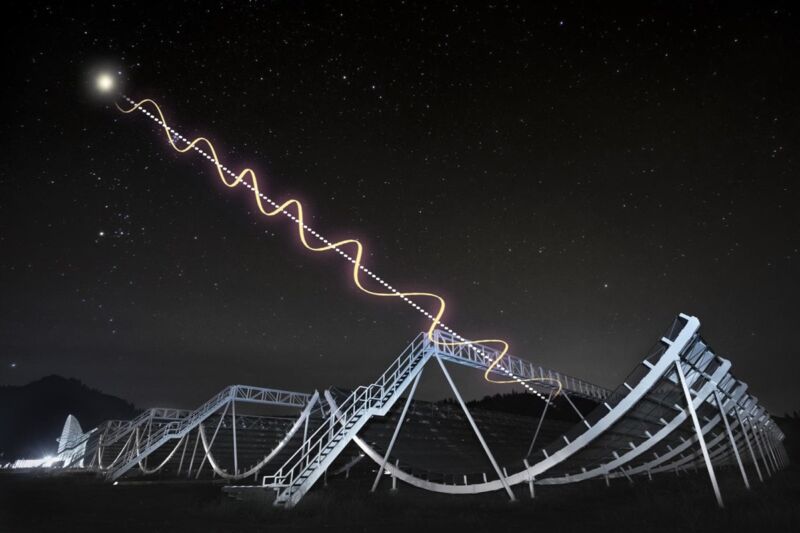Polarized light yields fresh insight into mysterious fast radio bursts

Enlarge / Artist's rendition of how the angle of polarized light from a fast radio burst changes as it journeys through space. (credit: CHIME/Dunlap Institute)
Astronomers have been puzzling over the origins of mysterious fast radio bursts (FRBs) since the first one was spotted in 2007. Researchers now have their first look at non-repeating FRBs, i.e., those that have only produced a single burst of light to date. The authors of a new paper published in The Astrophysical Journal looked specifically at the properties of polarized light emitting from these FRBs, yielding further insight into the origins of the phenomenon. The analysis supports the hypothesis that there are different origins for repeating and non-repeating FRBs.
This is a new way to analyze the data we have on FRBs. Instead of just looking at how bright something is, we're also looking at the angle of the light's vibrating electromagnetic waves," said co-author Ayush Pandhi, a graduate student at the University of Toronto's Dunlap Institute for Astronomy and Astrophysics. It gives you additional information about how and where that light is produced and what it has passed through on its journey to us over many millions of light years."
As we've reported previously, FRBs involve a sudden blast of radio-frequency radiation that lasts just a few microseconds. Astronomers have over a thousand of them to date; some come from sources that repeatedly emit FRBs, while others seem to burst once and go silent. You can produce this sort of sudden surge of energy by destroying something. But the existence of repeating sources suggests that at least some of them are produced by an object that survives the event. That has led to a focus on compact objects, like neutron stars and black holes-especially a class of neutron stars called magnetars-as likely sources.